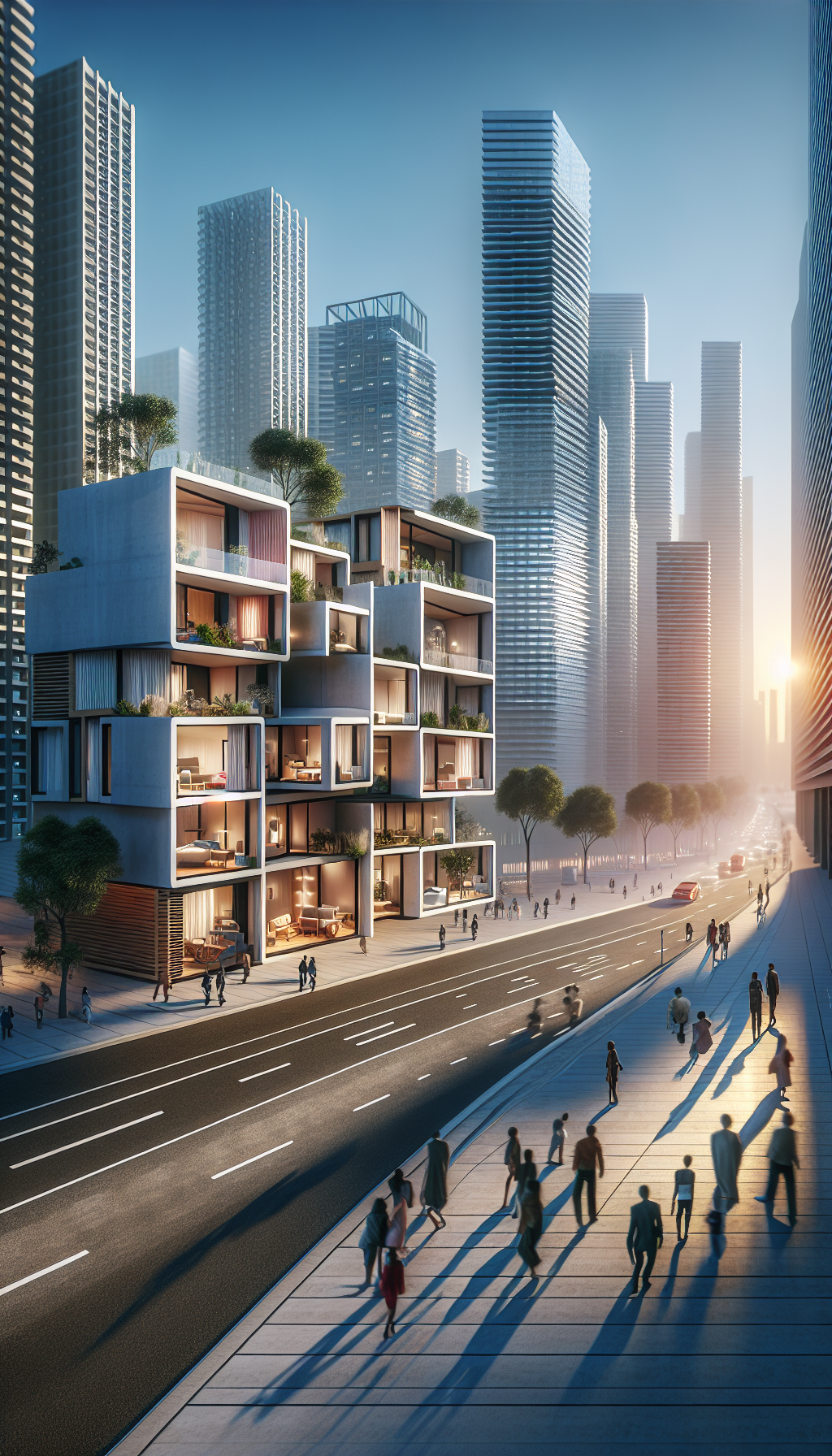Urban Living in 2023: The Rise of Micro-Apartments
The Concept of Micro-Apartments
Micro-apartments are compact living spaces typically ranging from 200 to 400 square feet, designed to incorporate efficiency, functionality, and aesthetic appeal. They cater to the increasing urban population and the evolving definition of home. In 2023, micro-apartments have gained popularity among millennials, young professionals, and empty-nesters seeking affordable housing solutions in metropolitan areas.
Economic Factors Driving Their Popularity
The rapid urbanization, coupled with rising housing costs, has made city living more challenging. A report from the Urban Land Institute highlights that rent prices have soared 20% in major cities over the past five years. Micro-apartments offer a financially viable alternative, providing essential amenities without the hefty price tag associated with traditional apartments. They are particularly appealing in cities like New York, San Francisco, and Tokyo, where sky-high rental prices can be prohibitive.
Space Optimization Tactics
Micro-apartments are ingeniously designed to maximize limited space. Designers employ multifunctional furniture such as foldable tables, Murphy beds, and storage ottomans, allowing residents to convert spaces seamlessly according to their needs. For example, a living area can transform into a bedroom at night or adapt to a workspace during the day. Vertical storage solutions and wall-mounted shelves further enhance utility without crowding the environment, creating a sense of openness.
Environmental Sustainability
In an era of increasing awareness about environmental sustainability, micro-apartments hold an edge by promoting eco-friendly living. Smaller living spaces lead to reduced energy consumption, with lower heating and cooling costs. Developers are increasingly incorporating green technology into building materials and designs. Solar power, energy-efficient appliances, and smart home technology contribute to lower carbon footprints, making micro-apartments a sustainable lifestyle choice.
Community Living
The rise of micro-apartments coincides with a shift in how urban dwellers perceive community. Many developers are creating residential complexes that promote social interaction and communal living. Shared spaces such as lounges, rooftop gardens, and coworking areas foster a sense of community among residents. This paradigm shift encourages a lifestyle that values connections over possessions, appealing especially to younger generations who prioritize experiences and relationships over larger living spaces.
Technological Integration
The integration of technology is pivotal in enhancing the functionality of micro-apartments. Smart home technology allows residents to control lighting, heating, and security systems through their smartphones, optimizing comfort and convenience. Virtual assistants help manage daily tasks efficiently, transforming small spaces into highly efficient living environments. Furthermore, tech-savvy homeowners can integrate IoT devices to track energy usage or monitor security remotely, promoting a smarter, safer lifestyle.
The Rental Market Dynamics
As demand for micro-apartments surges, the rental market is adjusting accordingly. Landlords and property managers are recognizing the viability of micro-units, leading to increased availability. Online platforms dedicated to short-term rentals make it easy for individuals to offer their micro-apartments, expanding housing options for transient residents and tourists. However, landlords must navigate zoning laws and regulations, which can vary significantly between cities, affecting the development of micro-apartments.
Lifestyle Considerations
Living in a micro-apartment necessitates a lifestyle adjustment. Many residents embrace minimalism, appreciating the benefits of decluttering and simplifying their lives. This trend has given rise to a burgeoning market for storage solutions and multifunctional products that allow residents to maximize their space while maintaining a stylish home. Moreover, living in a micro-apartment encourages individuals to step outside their homes and engage with the vibrant urban environment, promoting a lifestyle characterized by exploration and activity.
Design Trends 2023
Contemporary design trends in micro-apartments focus on creating an aesthetic that balances functionality with style. Neutral color palettes, multi-layered lighting, and creative use of materials that reflect individual tastes contribute to an inviting atmosphere. Designers are incorporating biophilic elements, such as indoor plants and natural materials, to bring a feeling of nature indoors, enhancing well-being in compact spaces. Open floor plans and glass partitions are also popular, as they aid in visual connectivity while distinguishing functional areas.
Challenges and Considerations
Despite their many advantages, micro-apartments are not without challenges. Square footage limitations can pose difficulties in personalizing space adequately. Residents may feel confined or lack privacy, particularly in buildings with a dense population. Additionally, the lack of storage space necessitates a lifestyle focused on minimalism, which may not suit everyone. Moreover, micro-apartments can sometimes lack the community vibe of larger residential units, leading to social isolation if communal areas are not appropriately designed or utilized.
Future Prospects
As cities continue to grow and the demands of the urban populace evolve, the future of micro-apartments looks promising. Real estate developers are increasingly recognizing the necessity of innovative housing solutions to accommodate diverse lifestyles. Smart city initiatives, focusing on sustainability, efficiency, and livability, further endorse the micro-apartment concept. Given the ongoing transformations in urban living, we can expect to see the integration of advanced technology, sustainability practices, and community-oriented designs in future micro-apartment developments.
Conclusion
Urban living in 2023 is characterized by the rapid rise of micro-apartments — a reaction to economic pressures and shifting lifestyle preferences. These efficient, sustainable, and community-centric living spaces are reshaping the way people engage with their environments. As society evolves, so too will the concept of home, demonstrating that less can indeed be more in the heart of the city.

